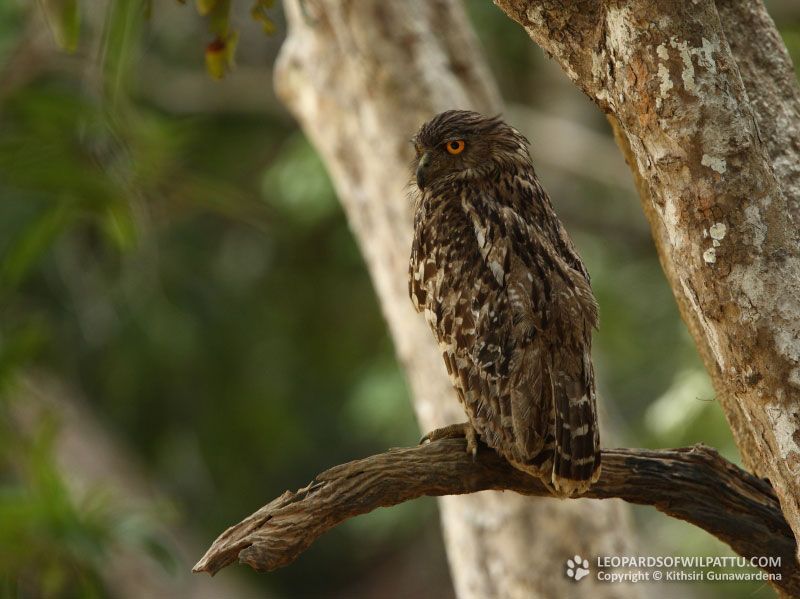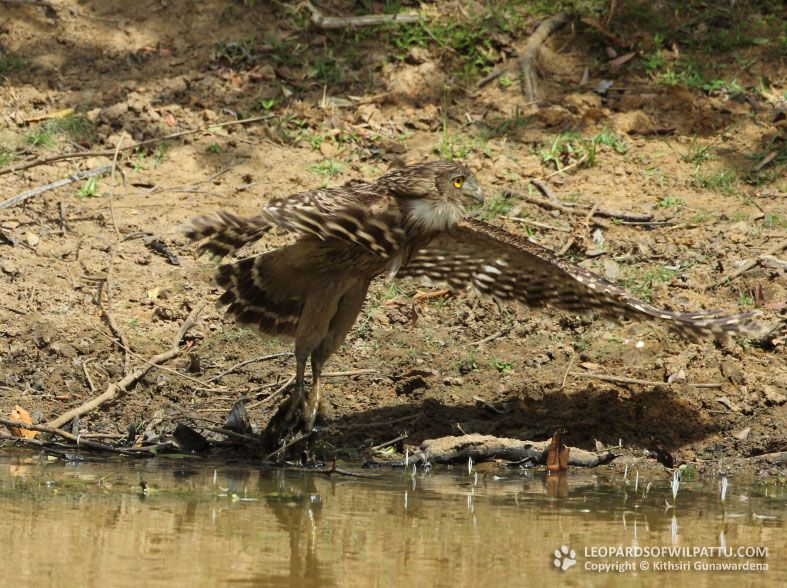
Birds ‹‹ Go Back
This is a resident breeding species in the country. There are four subspecies recognized in the world. The subspecies K.z. zeylonensis found in the country is endemic Sri Lanka. Common Brown Fish Owl K.z. lechenault, which is smaller and darker than zeylonensis, is found in the Indian subcontinent to Myanmar and Thailand. Western Brown Fish Owl K.z. semenowi which is larger and lighter in colour than zeylonensis was known to occur in South Asia minor and Pakistan but considered extinct due to no up to date data being available. Eastern Brown Fish Owl K.z. orientalis, which is darker than lechenault,is found in Myanmar, Vientnam and China.
The conservation status of this species is regarded as Least Concerned (National Red List 2012).
Brown Fish Owl is a species protected under the Fauna and Flora Protection Ordinance as amended by Act No. 22 of 2009.
This species is found throughout the country from the lowlands to the highest mountains. I have always found it close to water bodies such as streams and tanks where ever there is a small patch of forest or a grow of large trees for it to hide during the day. In the dry zone I have seen it at all the National Parks. It is fairly common out side-protected areas such as village tanks and on trees along rivers particularly in the dry zone. In the wet zone I have seen it at most forested areas including Sinharaja, Kitulgala, Peak Wilderness, Labugama and Meethirigala. In the hills I have seen this species at Meemure in the Knuckles forest reserve, Norton Bridge, Kandy, Hunnasgiriya and Haputale. I have also seen it at Trincomalee, Omanthai, Jaffna Peninsula and in the Palmyra grows at Talai-mannar.
In Wilpattu it is common close to all the villus and even small water bodies. However spotting them during the day is quite tough since though they perch on trees over looking a water hole or by the side of a villu during the day they choose trees with dense foliage as their day roost. The pair will generally roost separately but not too far from each other. At dusk they will fly on to an exposed branch or stump and start their booming duet before venturing out to look for food. I have heard the booming duet of this species while staying over night at the Tala Wila, Mana Wila, Panikkar Villu, and Kok Mottai bungalows. Even though it is primarily a nocturnal hunter I once came across one of these birds hunting during the day as well. On the 3rd of August 2013 I was parked at Thammanna Wala during midday expecting a leopard to arrive. Around 2.30pm a large bird dropped down from a tree growing on the bund across the water hole and pounced in to the water with its feet first and caught what I thought was a large frog. Even though I initially thought that it was an eagle to my surprise I found that it was a Brown Fish Owl. It spent some time perched on the edge of the water hole and flew off to a nearby tree with the prey firmly secured in its talons.




